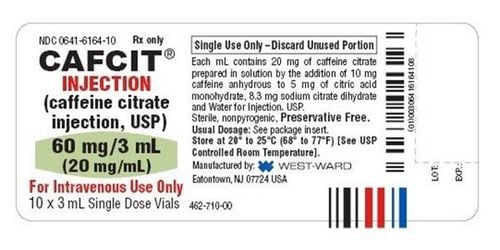This is an automatically translated article.
The article was professionally consulted by Doctor of Pediatrics - Neonatology - Vinmec Nha Trang International General Hospital.Umbilical vein catheterization, also known as neonatal umbilical vein catheterization, is a technique used in the emergency resuscitation of newborns or premature infants to provide nutrition, as well as administer medications and Translate.
1. What is umbilical vein catheterization?
In emergency situations for newborns and premature babies, umbilical veins are often preferred because they are not closed in the first few days after birth, so they are relatively easy to access.Catheter (catheter) of the umbilical vein is a technique using a catheter placed in the umbilical vein, indicated when a newborn needs an intravenous line for treatment, nourishment and monitoring. In particular, this measure is very necessary to implement as soon as possible for premature babies under 1000g.
The purposes of the umbilical vein catheterization method are:
Intravenous fluids in the emergency; Nutritional supplements for premature and low birth weight infants; The child's circulatory and respiratory functions are impaired; Monitor central venous pressure in children; Whole or partial exchange of blood; Transfusion of various fluids and drugs, but difficult to obtain peripherally; Contraindications to umbilical vein catheterization in the following cases:
Inflammation of the umbilicus, peritoneum or bowel necrosis; Umbilical hernia omphalocele or through a cleft in the abdominal wall (gastroschisis); portal hypertension;

Đặt catheter tĩnh mạch rốn là gì?
2. Implementation process
To perform this technique, in addition to basic first aid and survival monitoring equipment, the baby needs to be placed in a heated bed or incubator to ensure warmth during the procedure. In addition, before placing an umbilical vein catheter, it is necessary to disinfect the umbilical cord and surrounding area for the child with a cotton swab soaked in iodine alcohol to prevent infection. The specific steps are as follows:Step 1: Put the baby to lie on his back on a heated bed or in an incubator; Step 2: Can firmly fix the child's hands and feet; Step 3: Open the shirt to reveal the navel and the abdomen around the navel; Step 4: Disinfect the navel and surrounding area with iodine alcohol; Step 5: Choose the type of umbilical catheter that fits the baby, connect the leads and syringe with 0.9% NaCl solution; Step 6: Cut off a part of the umbilical cord close to the base or about 1.5 cm away; Step 7: Insert the catheter into the vein in the specified direction, aspirate blood back out, then inject 0.9% sodium chloride solution; Step 8: Secure the umbilical vein catheter with sterile thread and tape. Once completed, the nurse or nurse practitioner should fully document the order in the child's medical record. The umbilical vein catheter should not be kept for more than 14 days because it increases the risk of infection.
3. Attention when placing the umbilical vein catheter
The umbilical vein catheterization technique plays a role in timely diagnosis, accurate monitoring, and effective treatment in neonates requiring resuscitation for circulatory failure. This method also has many advantages such as safety, avoiding exposure to infection, as well as reducing pain for the patient and stress for parents.Placement of an umbilical vein catheter should be performed within the first days after the baby is born.
Occasionally there are cases of complications such as catheter foot infections, embolism, necrotizing enterocolitis, or cardiovascular complications.
4. Placement of umbilical vein catheters for premature babies at Vinmec Nha Trang

Một trong những kỹ thuật trọng điểm tại Khoa Nhi Sơ sinh - Bệnh viện Đa Khoa Quốc tế Vinmec Nha Trang là kỹ thuật Nuôi dưỡng tĩnh mạch cho trẻ sơ sinh qua ống thông (catheter)
Although it just started implementing the technique in the first quarter of 2019, Vinmec Nha Trang has so far performed more than 60 cases with a success rate of 100%. There have been many cases of babies born prematurely from 33 weeks old and weighing at least 1500g or more successfully placed here.
Vinmec Nha Trang's strength is that it has enough human resources to perform well the technique of feeding through the umbilical vein catheter, including a team of leading pediatricians such as:
Master, Doctor Nguyen Thanh Hung Thac Doctor, Doctor Huynh Bao Toan Master, Doctor Dang Huy Toan Master, Doctor Doan Ngoc Quynh Tram Master, Doctor Nguyen Hoang The Nhan In addition, modern equipment with closed infusion system , sterility from Clinical Pharmacology is also the highlight of Vinmec's technique.
In addition to competitive technical costs, patients also enjoy high-class, international-standard services such as disease prevention, dedicated care, as well as considerate and thoughtful examination.
For more information about the technique of Intravenous nutrition for newborns through catheters at Vinmec Nha Trang, you can book an examination HERE or contact HOTLINE 0258 3900 168.













